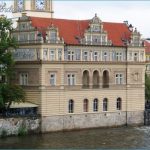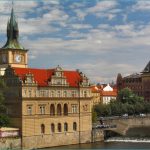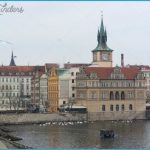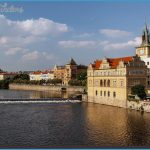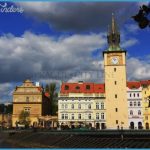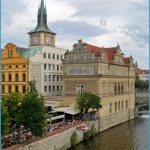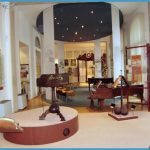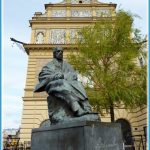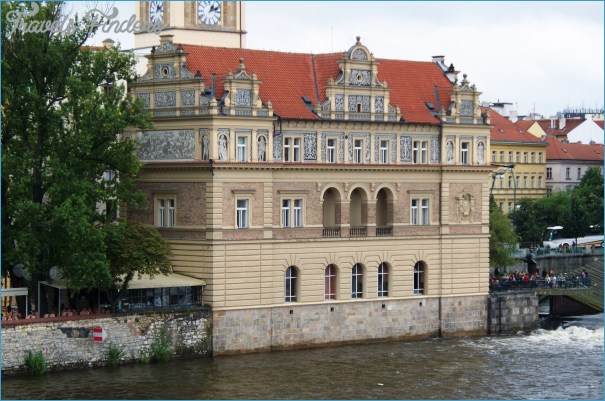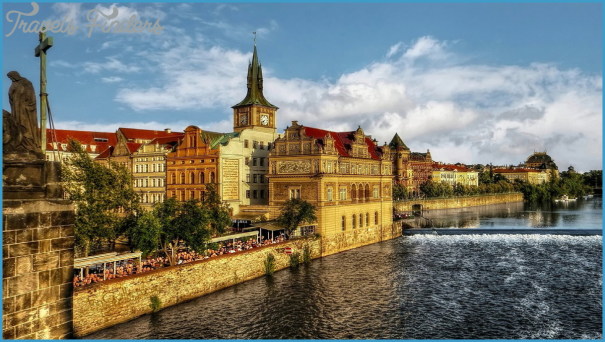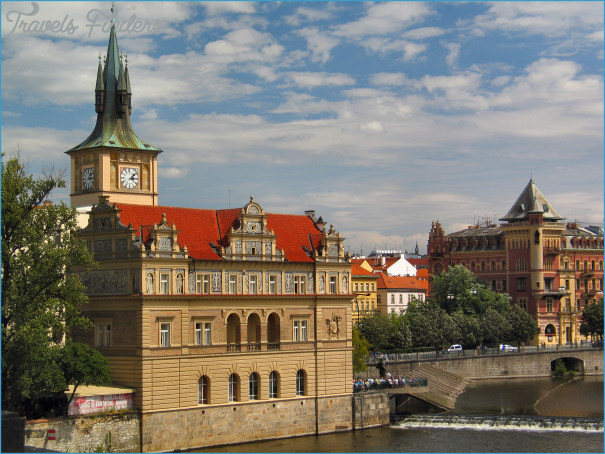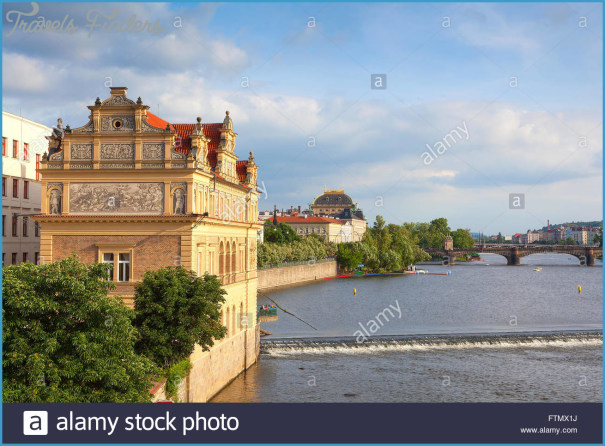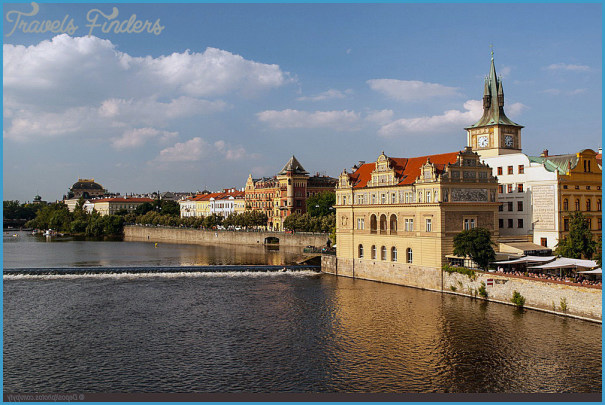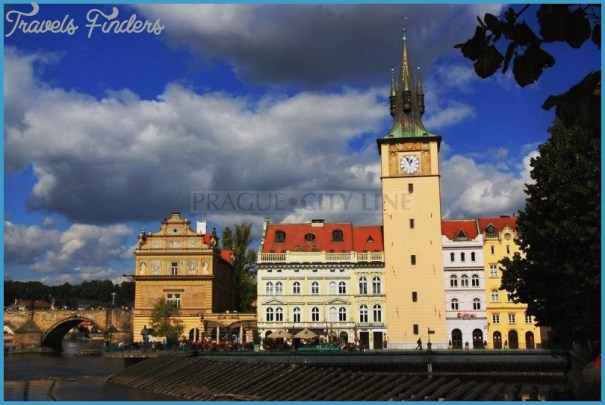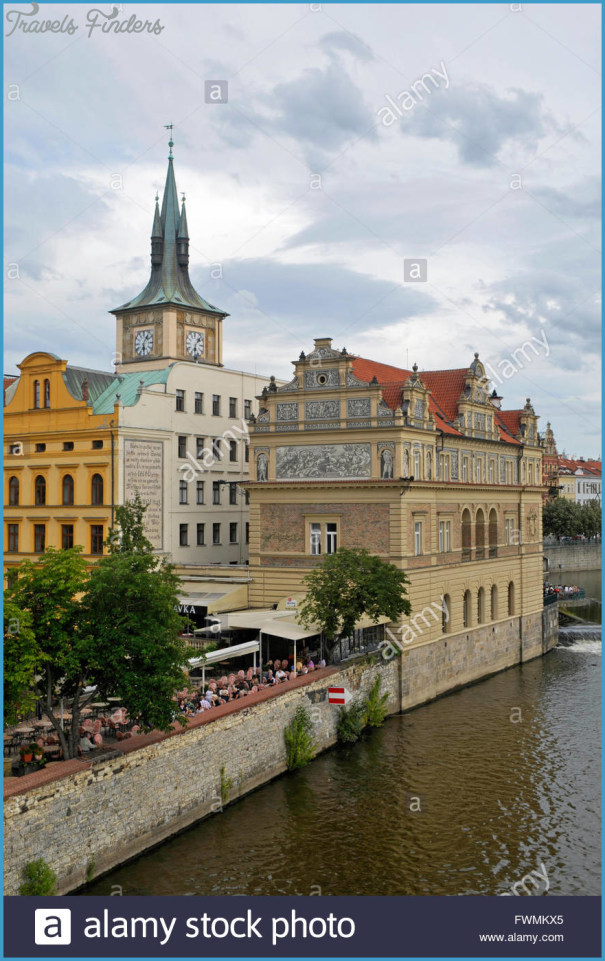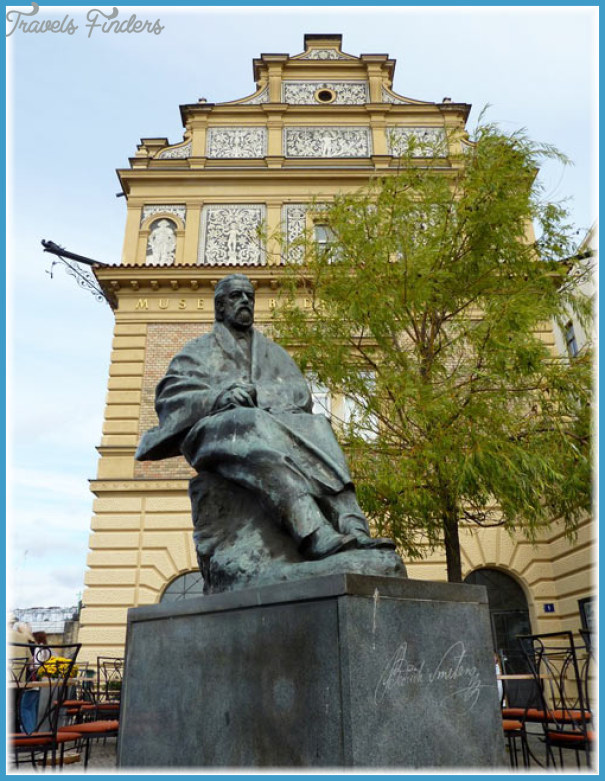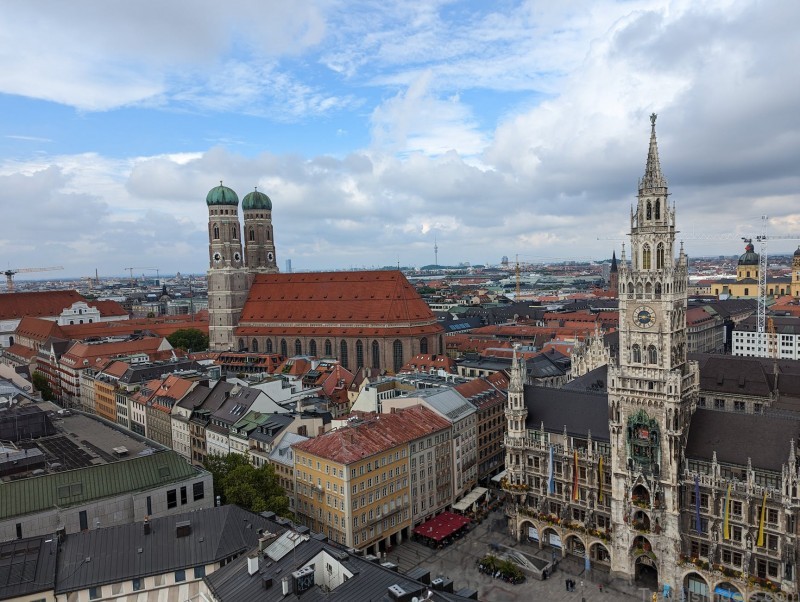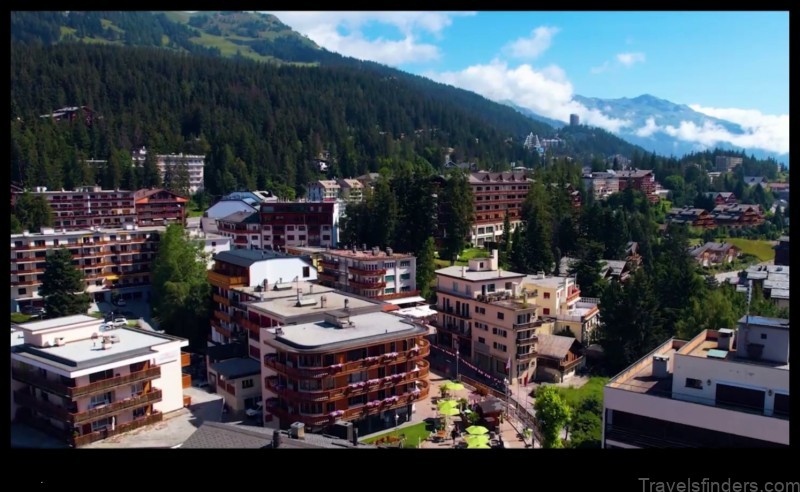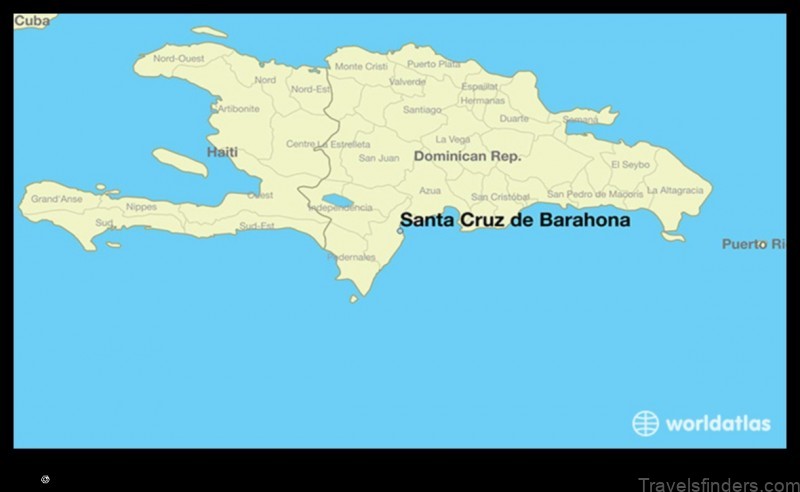SMETANA MUSEUM
The central position occupied by the Smetana museum in Prague powerfully symbolizes the place that Bedrich Smetana holds in Czech music: it occupies the former Old Town Water Works, a large neo-Renaissance building, an architectural landmark in its own right, standing in a bustling street on the right bank of the Vltava, at the foot of the city’s most famous landmark, the Charles Bridge.
Smetana was a Czech national icon even in his lifetime. From the early 1860s, when he returned to Prague after spending five years in Goteborg, he had become a central figure in Czech musical life. He was first chairman of the Umelecka Beseda (Artistic Society), set up in 1863 to promote national culture; he worked as music critic for the most important Czech newspaper, organized subscription concerts in Prague and from 1866 was musical director of the Provisional Theatre, the first professional Czech stage, where his operas The Brandenburgers in Bohemia and The Bartered Bride had their premieres that year.
Even after his deafness forced him, in 1874, to retire from active musical life, he retained his position in Czech music, with his patriotic opera Libuse being given at the opening of the National Theatre in 1881 and the popularity of his cycle of six symphonic poems Ma vlast (‘My country’), dedicated to the City of Prague. When he died in 1884, his colleagues in the Umelecka Beseda organized his funeral at the Tyn Church; the route to the cemetery at Vysehrad, overlooking the Vltava, was lined with his admirers. Efforts to collect and preserve Smetana’s legacy were begun by his family immediately after his death.
A Society for the Construction of a Bedrich Smetana Memorial in Prague, later to become the Bedrsich Smetana Society, was founded in 1909. It mounted a Smetana exhibition in 1917 and nine years later founded a museum, at least in name if not in substance. In 1928 the Czechoslovak State formally acquired the Smetana estate from the heirs and entrusted its management to the Society. The Smetana Museum finally opened in Prague in 1936. After the war, in 1952, the Society was dissolved and the management of the museum was transferred to the State. Little was done to renew the displays or keep the building in good repair.
However, to mark the centenary of Smetana’s death, the Museum of Czech Music undertook an exhaustive inventory of the collection; some 2000 items were catalogued, including 270 autographs, 1100 letters (some to fellow musicians such as Liszt and Clara Schumann, others to collaborators, theatre managers and publishers), 34 diplomas (mostly honorary), a collection of his diaries of the period 1840-83, his own drawings, concert programmes and reviews and 33 portraits. The collection also includes archives of theatre bills, posters and related programmes, nearly 1000 scenic and costume designs as well as 55 costumes used in productions dating back to the 19th century, and a library of over 11,000 volumes and recordings.
SMETANA MUSEUM Photo Gallery
In 1992, after the political changes of 1989, the fortunes of the Smetana Museum brightened and it was possible to modernize the exhibition. An entirely new and up-to-date Bedrich Smetana Museum opened in 1998. As before, the displays are confined to one large open-plan room on the first floor (on the second is the Smetana Archive, open to scholars by appointment). A chronology of Smetana’s life is recorded on scrolls, glass panels display facsimiles, and a folding screen supports further documentation. A bandstand with an obelisk in the centre displays the composer’s glasses and his wife’s jewellery. Chairs for visitors line an oval listening space’ incorporating Smetana’s piano, while the windows offer views of the river and the Charles Bridge. On the far side of the room, ten music stands display facsimiles of Smetana’s music, with relevant documents and iconography. Opera costumes are displayed in an alcove on the right, amid illuminated stained-glass panels with appropriate scenery. Finally, visitors are invited to contemplate a simple glass panel carrying an epilogue honouring Smetana’s patriotism. The curators and designers, each in their own way, have taken to heart the task of representing the legacy of one of the Czech Republic’s greatest composers, and there is clearly something here for everyone.
In 1949, to mark the 125th anniversary of the composer’s birth, the museum mounted exhibitions outside the capital, at Smetana’s birthplace at Litomysl, an exceptionally attractive small town about 150 km east of Prague, and closer to Prague at Jabkenice, where he retired; in Displays of Smetana’s music in Prague 1959 a further exhibition was installed in the family quarters adjoining the castle brewery at Litomysl, and it was renewed in 1974. Smetana’s father was a master brewer (and also a cultured amateur violinist) who rented premises at the castle of the Waldstein-Wartenberg family on the edge of the main square, where his son’s statue now stands.
Today the castle and its outbuildings house a complex of museums and also an 18th-century theatre with period stage sets. The Smetana exhibition occupies four pleasantly spacious rooms, with vaulted ceilings and white-painted walls. The first is furnished as his parents’ bedroom. In the second, a long, corner room, there is a family tree and facsimiles of the composer’s birth certificate and other documents, including school registers and family letters, and his father’s shooting target (he belonged to a hunt). Although the third is set out as a living-room, with handsome portraits of his parents by Antonm Machek, a clock presented by the Waldstein-Wartenbergs and a Leschen grand piano from Vienna that Smetana played at the age of six, this is thought to be the room in which, in 1824, he was born. In the fourth room, the brewery office of Frantissek Smetana, costumes from various 20th-century productions of The Bartered Bride are displayed. In an alcove stands a statue of Smetana.
The Smetana family moved away from Litomyssl in 1831 and Bedrsich’s education was much interrupted. By the early 1840s he was in Prague, impoverished and studying the piano, and in 1844 he accepted a post in the household of Count Thun-Hohenstein which involved giving piano lessons to the family and spending the summers at their country residence in Benatky nad Jizerou, 40 km north-east of the capital. He was there for about four years; during that time he composed chiefly piano pieces. A room in the local museum, in the castle, commemorates the connection. The castle was sold, to the Kinsky family, early in the last century, and any original furniture was auctioned; but it is thought that the piano and the desk preserved there now may have been those used by Smetana. There is other furniture of the time, a display of facsimiles of documents from the 1840s, a map showing all the places in Bohemia where Smetana lived, a fine plaster bust by Josefa Strachovsky – the only one of Smetana made during his lifetime – and large portraits of the Count and Countess, his employers. Adjoining rooms commemorate members of the BENDA family who worked there a century before. Smetana’s anniversaries are celebrated by concerts in the town and there is a further bust, dating from 1974, in the park below the castle.
The region to the north and northwest of Prague is littered with Smetana (and Dvorak) sites. Another important one is the small town of ObnsM, 30 km north of the city, with which the composer had a double family connection. His father set up a brewery there in 1844 and remained there until he became bankrupt in 1852 (a hall in the surviving brewery building was named Smetana’s bust guards the flood-ravaged house at ObrisV as the Smetana Memorial Hall in 1956). Smetana’s brother Karel married into a local family, the Ferdinandis, and when in 1859 Bedrich, whose first wife had just died, visited him he met his brother’s sister-in-law, Bettina. Smetana and Bettina were married the next year, from the Ferdinandi family house, one of a group of houses in the Lamberk area. Smetana visited Obnstw several times in the early 1860s and is believed to have begun work on The Bartered Bride there.
The house still stands, but only just. Behind it runs the river Labe (or Elbe, as it becomes), a tributary of the Vltava, which has always been susceptible to floods and succumbed seriously in the summer of 2002, when the waters filled the basement and reached a depth of three metres on the ground floor. The small display was saved but the fabric of the building – floors, walls, stairs, even the roof – was severely damaged. The display, originally set up on the Smetana centenary in 1984, included a table piano, a daybed, a table, a commode and a portrait of Smetana from his time in Goteborg, and also various pictures (both Smetana’s wives and Bettina’s parents, costume sketches for The Bartered Bride) and a porcelain and glass collection (this also served as a museum of local life). As the museum is owned by the village, and not covered by insurance, its future must be uncertain and at best rather distant, but the parent museum in the nearby town of Melmk anyway had plans for a substantial refurbishment in association with the Prague Smetana museum. Meanwhile, it is still possible to visit the rather melancholy site – and also to see the memorial house, close by, to the writer Svatopluk Cech, a native of Obfistvl, in even sorrier a state.
From 1876 until shortly before his death in a Prague asylum, Smetana lived with his daughter Zsofie and her husband Josef Schwarz, a local forester, on the Thurn-Taxis estate at Jabkenice, about 60 km north-east of Prague, near Mlada Boleslav. They lived in what had been the estate forester’s house, probably since the early 17th century. He continued to compose despite his deafness, completing there his last three operas (The Kiss, The Secret and The Devil’s Wall), the E minor String Quartet, two cycles of piano music and works for male chorus. After his death, his widow remained there and his son-in-law and daughter continued to live there until his retirement in 1898. Early in the 20th century the house was enlarged (the newly built sections do not form part of the present museum, but the layout of rooms in the older part was also affected). In 1928 a group was set up to establish a museum there; it acquired material from Smetana’s estate from the family and Smetana’s study was opened to the public that year. In 1936 it was acquired by a dedicated society and an exhibition was set up in collaboration with the Narodm Muzeum.
After the war, in 1950, a new exhibition was installed; that was replaced in 1964 and remained for 20 years. The house underwent substantial repair and reconstruction in the later 1980s and early 90s, but remained closed as the funding had run out; further restoration work was needed in 2001 and it opened briefly the next year, then had to close again after the floods in the vicinity, reopening in 2003. The renovated museum falls under the management of the Prague Smetana Museum and can draw on the collection there for its exhibits. It was also able to call on the descriptions in the memoirs of one of Smetana’s granddaughters for the design and layout of the two main rooms, on the upper floor. These are historically reconstructed, using some of the original furniture: first a large room, serving as both dining-room and drawing-room, then beyond it (at the front of the house) Smetana’s study. In the former is a piano given by Smetana to his daughter as a wedding present; in the latter is a desk, with items of Smetana’s own and a bed by the stove – in his late years Smetana virtually lived in this room. The decoration of the walls, using a stencil hand-painting technique popular in the region (which from even a modest distance Forester’s house and school at Jabkenice, now a Smetana museum, drawn by Smetana’s daughter Zdenka in 1883 simulates wallpaper), is authentic’ in style if not in actual detail. The tones are subdued, favourite autumnal browns.
Display cases and wall boards (with texts in Czech and English) describe Smetana’s life and his music of these late Jabkenice years and his connections with this region of Bohemia, and there is soft background music. Smetana’s second wife, Bettina, was an artist and some of her original paintings are hung, and there are also paintings in the house by his grandson Zdenek Schwarz. On the ground floor is the central reception area and a large room with comprehensive, basic information about Smetana’s life and works, with a series of plinths on which a variety of representations of him, in statues and busts, are mounted. There is also a small recital room, seating 50, with CD listening facilities. A theatrical curtain painted by Bettina, formerly at Obfistvl, hangs on the wall. Outside, a garden and a place for summer eating are planned, incorporating the two fir trees planted by Smetana’s daughters and bearing their names. There is also a Smetanova Prochazka’, a three-and-a-half kilometre walk through the woods, passing two lakes and a favourite spot where Smetana liked to sit.
The years between 1856 and 1861 that Smetana and his family spent in Sweden were the subject of an exhibition at Goteborg in 1961, but the Smetana museum that later opened there, based on material loaned from the Prague collection, finally closed at the beginning of the 21st century.

